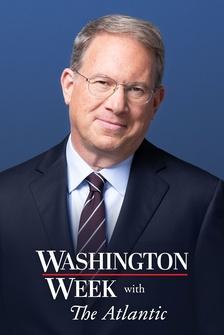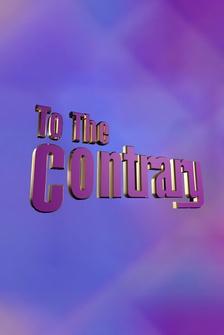Announcer: This program was made possible by the John S. and James L. Knight Foundation, the Andrew W. Mellon Foundation, and by contributions to your PBS station from viewers like you.
Thank you.
Activism informs art and art affects activism.
They go hand in hand.
When you take that brush to the wall or to the canvas, or you're molding that clay, you're creating some sort of movement.
You're looking for some sort of change.
And I realized that art can actually be a fuel to kick that change off in a major way.
♪ Hi, everyone.
I'm Amna Nawaz.
Welcome to another season of "Beyond the Canvas," from the "PBS NewsHour."
We are back with even more artists and creators whose impact stretches far beyond the stage, the screen, or the pages of their book.
Tonight, we meet 5 trailblazers who are finding inspiration in the world around them.
You just heard from Shawn Dunwoody, a Rochester-based artist whose street murals blend messages and color into powerful statements on race, justice, and inequality.
Tonight, you'll also hear from a few more folks.
Artist Andy Yoder, big wave surfer Joana Andrade, mountaineer Dom Mullins, and curator Margaret Salazar-Porzio.
One of the themes of tonight's show is breaking boundaries.
All of our guests have a couple of things in common.
They have defied expectations and they've consistently spoken their truth.
Everyone you're about to meet was first featured on the "PBS NewsHour" and tonight, you'll meet them on a new canvas and maybe see them and their work through a different lens.
The "PBS NewsHour" is proud to present our third season of "Beyond the Canvas."
Now back to our brief, but spectacular, take from Shawn Dunwoody.
Dunwoody: You know, growing up in Rochester, New York, I spent a lot of time alone because mom's gotta work two jobs, and I started to spend a lot of time drawing and coloring and comic books, and I wanted to be a superhero and help shape the world.
And I saw that there were ways to actually do this with art and bringing people together.
I began showing in galleries and at universities and colleges and I was lecturing and talking about what some of the issues are that I'm dealing with here being a Black man here in America.
And I felt it was great.
I'm like, "Oh, yeah, look at this.
People are paying attention to me and it's gonna be great."
I got a chance to hang my artwork.
But I had a moment where I was addressing an audience and the audience looked nothing like me and I said, "Do they really care about what I'm talking about?
"And once I leave this room, will they actually try to create some change in my neighborhood?"
And I said, "I need to be back in my neighborhood.
"I want to be what I wanted to see when I was 15 years old."
My partner and I, Suzanne Mayer, we started Hinge Neighbors, and what that was really about was about there's a highway that runs in the middle of our city.
There are two totally different social-economic groups on either side.
And so, we wanted to be able to work together to amplify the voices of those people.
First off, we created an art project so they could actually beautify their neighborhood together.
When I'm working on a community-based project or political project, whatever that may be, I want to infuse some sort of creativity in there.
We're all making things happen together and we're listening to music all while we're learning about the mission that we have to accomplish in the neighborhood, all while gathering names of folks who might not otherwise come out to see or do anything.
If I said, "I want to find out how you feel about your community or your neighborhood," no, but if they see something that draws their eye, makes them think about themselves differently in the environment, makes them feel a bit happy and connected and say, "Hey, I actually did this in my neighborhood," now they've actually committed themselves physically to a project and mentally they're committed to moving and shaping this community.
So, that's how I use art as sort of this-- it's the sort of hook way.
I kind of hook them in there and say, "Hey, come on.
This is cool.
Come and join me.
You like this."
And what I've seen is that people will really talk to each other and engage in conversations.
And when we listen, when we try to understand, when we reach out and we ask and we give and we ask and we give, we will find out there are amazing things that can be accomplished together when we connect.
Ahh.
My name is Shawn Dunwoody and this is my brief, but spectacular, take on bridging communities with art.
Pah!
Another artist using his spark to examine the world we live in is Andy Yoder.
His attention-grabbing exhibits transform everyday objects like matches and garbage, even licorice, into art.
Last year, he created an exhibit called "Overboard."
That paid homage to the 1990 great shoe spill in which tens of thousands of Nike shoes fell off a container and into the Pacific Ocean.
My "NewsHour" colleague William Brangham spoke with Yoder about his work.
Brangham: At first glance, it looks like a sneaker showroom with what seem to be 200 Nike Air Jordans along the walls.
A candy shop of sorts for the so-called sneakerheads who collect all manner of brands as a passion and sometimes for profit.
But look more closely.
These are no ordinary shoes.
They're intricately sculpted replicas, fashioned out of everyday garbage.
Discarded boxes, bags, and posters.
Yoder: It's really fun to sort of latch yourself onto those-- those graphics and also the-- the brand recognition and the--the nostalgia that people feel for those brands.
And, again, it's drawing them in.
Brangham: Conceptual artist Andy Yoder crafted these objects following his similar eye-grabbing installations like these massive paper airplanes aloft in the Cleveland airport, or this model of planet Earth built from 300,000 wooden matches, or these enormous shoes, 7 feet long, made of licorice.
For these handmade sneakers, all size 13, Yoder says each took roughly 6 hours to construct.
And his raw materials, they often came out of garbage cans, alleyways, and dumpsters.
No material was ruled out, no place off-limits.
He found the scraps for one shoe out behind his local Chinese restaurant.
And then in the dumpster along with these other packages, I found this jigsaw puzzle of a tiger and I just thought that is the great combination here.
So, someone had done-- assembled the puzzle and then chucked it.
They did.
Right next to Salvatore Ferragamo, you've got Special K cereal or Veuve Clicquot right next to Hot Wheels.
So, it's that juxtaposition, that slamming together of things from high culture, low culture, all those different things kind of bumping up against each other.
Brangham: But this is about more than just a chaotic collision of color.
Yoder hopes we can learn something new from the things we cast away, very much like the 3-decade-old event that inspired this work.
In 1990, the container ship "The Hansa Carrier" was traveling from Korea to North America when it hit rough water.
The storm threw overboard several containers full of roughly 80,000 Nike shoes.
Adrift on the Pacific, thousands of those sneakers washed ashore months later.
It turned out that every shoe has a serial number, like a message in a bottle.
Is that right?
So you could track each-- not just the whole containers full, but each individual shoe.
Correct.
Brangham: Oceanographer Curtis Ebbesmeyer studied that small sneaker flotilla.
He's been dubbed the world's expert on flotsam, the floating debris spilled from cargo ships.
Ebbesmeyer has tracked everything from spilled rubber duckies to floating hockey gloves.
The 1990 shoe spill and many others like it have helped researchers understand the behavior of what are called gyres, which are huge circular ocean currents.
By tracking thousands of objects from different spills as they drift, scientists can now better predict how something like an oil spill might travel and where it might end up.
And the original Nikes specifically taught Ebbesmeyer one odd fact--that left shoes tend to drift one way and right shoes another.
The ocean, I think, speaks to us in what I call flotsam tongue and I'm here to read it.
Brangham: The "Overboard" exhibit is, not coincidentally, displayed in a 40-foot shipping container in southeast Washington, DC.
Artist Yoder and scientist Ebbesmeyer share the same fascination with the 1990 spill and admire each other's work but haven't met.
Yoder displays his shoes with a nod to Ebbesmeyer's findings-- left shoes on one side, right shoes on the other.
And yes, the art is for sale.
$750 a shoe.
For the "PBS NewsHour," I'm William Brangham in Washington, DC.
Across the Atlantic, big wave surfer Joana Andrade is thinking about the ocean in a different way.
As one of the only women in a male-dominated sport, she's fighting to make room for herself and others in the water.
Recently, Andrade was the subject of the documentary called "Big vs Small."
"PBS NewsHour"'s Stephanie Sy spoke with Andrade about facing her fears, creating space for women, and catching some of the world's biggest waves.
Sy: This is Nazare, Portugal, home to the biggest surfable waves on the planet.
So big that surfers have to be towed in with jet skis.
So big that the 50- to 100-foot walls of water can slam surfers to the ocean floor.
The big wave surfing world descends here every fall and winter, even during a worldwide pandemic.
Like many extreme sports, big wave surfing is male-dominated.
Portuguese surfer Joana Andrade is one of a handful of women trying to change that.
So, in beginning, it was not easy and sometimes it's not easy, too.
They look to us and say, "Ah, "you--maybe you are not able to surf, "maybe it's too big, are you sure you want to go?"
But I think it's changing.
Sy: Andrade is the subject of the documentary "Big vs Small," in part a nod to her height-- 5' 1".
Does it make it harder being someone on the shorter side, surfing these big waves?
Some people don't know me and they look, "Ah, "you are Joana Andrade?
But you are so small and you surf these waves."
My strong not come from my body but yes, from my--from my mind and from my heart.
I love that.
Your strength comes from your heart and your mind.
The sheer size of the waves was what intrigued the film's director, Finnish filmmaker Minna Dufton, and in the interest of research, she learned to surf, albeit on smaller waves.
A lot of the film is about big feelings and how to conquer them.
Is that what you were going for with the title "Big vs Small"?
Joana is tiny and the wave is rather huge, and I've always been drawn to opposites and, you know, I found it so interesting how, you know, figure out what is big and what is small in us humans.
Sy: The story is as much about surfing as it is about the mental strength and mindset it takes to conquer these waves, particularly when you have a profound fear of drowning, as Andrade does.
Of course I'm afraid to drown.
But I keep going there because I want to-- I want to know why I'm so afraid to do-- so afraid to drown.
Oh, so you're trying to explore your fear through surfing.
Yeah.
Yeah.
Sy: Dufton herself faced both literal and metaphorical waves in making this film.
First, there was Mother Nature.
I don't think I've ever been as nervous as a director to see my crew all out there in jet skis and, you know, Joana surfing and those waves, they are pretty tight one after another.
They don't really leave that many opportunities for us as a film crew to capture the shot that we want.
Sy: Another big wave she faced: funding.
The equity issue that you bring up with big wave surfing and women is probably also something you can relate to as a female documentary filmmaker, right?
You know, big wave surfing and independent filmmaking is fraught with doubt, you know, uncertainty about where the money is gonna come from, and rejection.
I mean, Joana Andrade, for example, she is a non-sponsored athlete in that sport and I'm an equivalent filmmaker.
Well, I'm sure during the pandemic, there are a lot of people facing big waves.
You know, Joana's story is, you know, a really good example of, is overcoming your biggest fears, and I really hope it helps people overcome their fears and whatever big waves that they're facing in their lives.
Sy: For the "PBS NewsHour," I'm Stephanie Sy.
Next up, we hear from Dom Mullins, who, like Andrade, is fighting to be seen in a field where people like him have long been invisible.
Mullins is part of a group of mountaineers called Full Circle Everest, a group hoping to make history in 2022 by becoming the first all-Black team to summit Mount Everest.
I spoke to him about reaching for new heights and forging a new path for others to follow.
Most days for Dom Mullins start like this-- runs through the woods.
Workouts in his makeshift gym.
And post-exercise plunges into a freezing cold pond.
It's a grueling regimen, all to prepare to climb a mountain synonymous with the ultimate challenge--Mount Everest.
Mullins: To climb a mountain like Everest, you need to have a lot of endurance, so, that's what I'm doing.
I'm building my endurance over time.
Nawaz: Mullins, who's been climbing for more than a decade, is part of a group that aims to become the first all-Black team to summit the world's highest mountain.
Called Full Circle Everest, the team of 10 experienced mountaineers and climbers from the United States and Kenya is set to climb Everest next spring.
Man: Two unassuming men have climbed the 29,000-foot Monarch of the Himalayas.
Nawaz: Since Tenzing Norgay and Edmund Hillary first climbed Everest in 1953, around 6,000 have followed in their footsteps.
But the team says only 10 of those have been Black.
As you are making your way up through the years, did you see or know a lot of other Black climbers?
Actually, I knew none.
- None.
- I knew none.
So, the--the--in fact, the only Black climbers that I've ever been with in the mountains are all on the Full Circle Everest mountaineering team, yeah.
You know, lots of people would remark when they would see me in the mountains, like, "Wow, I've never seen "a Black person climbing before.
"I've never seen a Black person in the mountains."
People would say that to you?
Oh, absolutely.
Nawaz: The numbers reflect Mullins' experience.
Black people make up just 9% of all those who participate in outdoor recreation in the U.S. and just 1% of the climbing community.
Mullins, an Iraq War veteran, was introduced to climbing through his work in veterans organizations.
He says it helped to fill a void left by the military.
Mullins: It was a part of my identity to be able to meet an obstacle, to be able to discipline myself enough to overcome it and then achieve that thing gave me pride in myself, and so, climbing became another vehicle in my life for that, that same process.
When you think back to that very first climb you did, not knowing what was ahead, not knowing what it would take, do you think you would have ever known back then that you'd be attempting to summit Everest these years later?
Absolutely not.
Ha ha ha!
Absolutely not.
Nawaz: By attempting to scale Mount Everest, he hopes to inspire others to connect with the outdoors and to highlight the access barriers Black communities often face.
There was absolutely no one that I knew in my community that even hiked or camped outside.
If you don't have people who are-- who live within proximity to you that you can learn certain things from, you don't learn those things.
Nawaz: The cost, too, is a hurdle.
Team lead Philip Henderson.
Henderson: Everest expeditions don't happen unless you have sponsorship or you're pretty wealthy.
For most people, especially in the-- those communities that are underrepresented in the outdoor community, Everest is untouchable.
Nawaz: Conditions on Everest have been under scrutiny in recent years.
Record numbers of climbers, raising concerns of overcrowding, and 11 climbers dying over a two-week period in 2019.
We look at managing the risk the best we can knowing that there are a lot of things that are out of your control, but the things that are within our control is what really makes a difference.
Nawaz: Mullins, too, believes all the preparation will pay off in Nepal.
I've had so many hurdles as you do when you're training for something like this, but it's meeting those hurdles and overcoming them that really allows you a certain belief in your ability for the main event.
Nawaz: Reaching for new heights and forging a new path for others to follow.
Finally tonight, we turn to another group using art to get the rest of the world to think differently about representation in sports.
"!¡Pleibol!
in the Barrios and the Big Leagues" is a bilingual exhibition at the Smithsonian that showcases the long and long-hidden history of Latinos in major league baseball.
Jeffrey Brown spoke with curator Margaret Salazar-Porzio to learn more about this rich but untold history.
[Choir singing indistinctly] Brown: Fenway Park in Boston, 2017.
The flag of the Dominican Republic covers the famed outfield wall known as the Green Monster, a tribute to beloved Red Sox slugger David Ortiz.
[Choir singing indistinctly] A deeply moving moment, even for baseball historian and lifelong Yankees fan Adrian Burgos.
I could not have imagined a day when the flag of the Dominican Republic would be unfurled over the Green Monster.
[Choir singing indistinctly] And it signaled a couple of really important things to me.
One was the power of the game to help transform ideas and feelings about a community.
Brown: Today, Latinos, born outside and within the U.S., make up some 30% of major league ballplayers, including some of the game's biggest stars, prominent in the recent All-Star Game.
But the long history of Latinos and baseball in this country is less known, and that's the focus of a new bilingual exhibition at Washington's Smithsonian Museum of American History.
It's titled "!¡Pleibol!
in the Barrios and the Big Leagues."
Woman: It's about how Latinos have been able to make a space for themselves.
Jeffrey: This was a long time putting together... Curator Margaret Salazar-Porzio wanted to capture the game at ground level through more than a century and what it meant to families and communities.
Her team held a series of gatherings around the country to meet individuals and collect material for the exhibition.
Some, like this high school letterman jacket, were then repaired by the conservation staff.
Also here, a scrapbook using "Life" Magazine.
A stickball bat made from a broom handle.
An old and very worn-in mitt.
We are hearing the same stories over and over again.
Whether you were in California or you were in Texas or you were in Florida.
Stories about family, about community.
Those were stories about how, you know, my father played this game and he was an agriculture worker or he worked on the railroad, but he made sure to incorporate baseball into his everyday life.
They were about women playing in the barrios, being able to play because maybe their team was sponsored by their local church.
After a while, we realized that these hyperlocal stories were actually part, you know, they were microcosms of a larger kind of American experience for Latinos and Latinas.
Brown: A key point--Latino immigrants brought the game with them as far back as the 1860s, from long-standing traditions in Cuba, the Dominican Republic, Mexico, Puerto Rico, and elsewhere.
Among many other examples, workers for sugar companies in Colorado's so-called Spanish colonies formed teams like the Greeley Grays, and the game gave them something more than a bit of fun in a country that was often unwelcoming in so many other ways.
Salazar-Porzio: Sometimes the networks that came out of baseball were networks that allowed them to find health care and to find, you know, services that they needed to become part of their local churches or, you know, support local community centers and businesses.
And so, so, some of it was, yes, we can play baseball and we can become, you know, part of these larger communities, but then other times, you know, they weren't accepted and they had their own community and they were fine with it, you know?
Baseball is part of that identity.
And baseball was part of that identity.
Absolutely.
Brown: At the national level, there's the 1939 uniform of a young Marge Villa, who later became a star in the All-American Girls' professional baseball league, and renowned game changers like Roberto Clemente.
His San Juan, Puerto Rico uniform, his Pittsburgh Pirates helmet from 1960.
And Fernando Valenzuela, the center of Fernandomania as a pitcher for the Los Angeles Dodgers in the 1980s.
But this is also a story of discrimination and the color line in baseball and America.
Burgos: Roberto Clemente himself said about Latino players, particularly Black Latino players, "We had two strikes against us.
"One, because we're Black and the other one because we're Latin, we're foreign."
Brown: Burgos and curator Salazar-Porzio point to continuing problems-- lack of representation among managers and front offices, racism still heard in the stands.
But also, how Latinos have permanently changed the style, the look, even the taste of the game and ballpark amid broader changes in American culture... [Man speaking Spanish on video] Brown: including at museums themselves.
Officials at the Smithsonian Museum of American History told us that all future exhibitions will have bilingual signage.
This one, says Salazar-Porzio, can help lead the way.
It shouldn't be so transformative, but for our institution, it is, you know, to have a fully bilingual show that was planned to be so from the very beginning to have, you know, this, the fundamental premise of it be that Latinos have changed, you know, this quintessential American sport, that is a transformative moment.
Brown: For the "PBS NewsHour," I'm Jeffrey Brown at the Smithsonian Museum of American History in Washington, DC.
[Ringing bell] It's a beautiful way to look back at how far major league sports have come but also how far they have to go.
Each of the artists and trailblazers you've seen tonight has used their work to carve a new path, paths of beauty and bravery, history and hope.
Paths that inspire the rest of us to get out there in the world and leave our marks.
We hope you'll leave yours.
You can join our conversation online at pbs.org/canvas and find more Canvas art stories on the "PBS NewsHour."
I'm Amna Nawaz.
For all of us at the "PBS NewsHour," thank you for joining me here on "Beyond the Canvas."
We'll see you soon.
Coming up on the next "Beyond the Canvas," Korean chef Joanne Lee Molinaro is joined by other artists who are all innovators in their fields.
Molinaro: I did see how social media could be used to bring people together.
And that's really the point of "The Korean Vegan."
Woman: It's just not a lump of toxic stuff.
It's a story.
Second woman: You have to kind of overstate that you're not just a singer, you are also a composer, you're also the producer, you're also the arranger.
♪ ♪ ♪ Announcer: This program was made possible by the John S. and James L. Knight Foundation, the Andrew W. Mellon Foundation, and by contributions to your PBS station from viewers like you.
Thank you.









